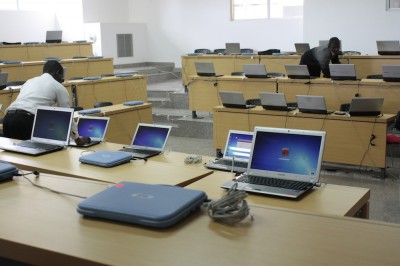The Innovation EcoSystem in East Africa
This post is the third in a four-part series on Africa: The Present Frontier
“Many investors see East Africa’s strong growth potential as a driver of better investment performance than in South Africa: This is a huge shift in private equity attitudes toward Africa, which have been historically focused on South Africa. East African investment potential is seen as roughly on par with West Africa, where similar growth dynamics are at play.”
Attitudes are changing. New ideas are emerging from a continent few technology investors took seriously only a few years ago. The ideas that have modified the world’s attitudes about investing in Africa have been ignited by four elements of the innovation ecosystem which have come to life and began to flourish. Like a mother giving birth, every element first ‘popped’ and then began to grow as the continent writhed in pain. The pain of implementing new infrastructure, enforcing better governance, creating new policy and regulating new services like mobile telecommunications and mobile money that have catalyzed the rise of tech innovation on the continent.
Four elements within the innovation ecosystem are playing a big role in changing Africa’s profile on the tech scene. However, they are all areas that still require great deals of investment, representing in themselves opportunities for anyone astute enough to see ways in which they can be exploited.
- Education is a big part of the ICT innovation ecosystem. The quantity and quality of ICT programs offered by educational insistitutions and other organizations can have an impact on the quantity and quality of tech innovations coming to the surface. The ICT education sector in Africa has evolved from offering plain computer science programs to multidisciplinary ICT programs like Bachelors in Business IT and Masters programs in ICT Policy & Regulation. However, there is a need to diffuse this education beyond first tier cities by creating the right business and regulatory environment to encourage the growth of training centres in rural towns.
- Mentoring & incubators. Educated young people with great ideas need the right environment and mentorship to work on their idea and prototype it. Hubs & incubators are helping to do that. iHub, mLab East Africa, ccHub, Bongohive, HiveColab and others across the continent are making it possible for tech innovators to find a physical space in which they can build their ideas out in good company and find mentors to help them make the leap from idea to viable profitable businesses. These organizations are also providing valuable linkages between entrepreneurs and potential investors. There are currently 53 hubs and incubators on the continent with the vast majority in sub-Sahara Africa according to this crowd-sourced data. There’s room to set up more of these in East Africa, especially outside the capital cities.
- Funding these ideas to launch or to scale is a big challenge for both venture capital funds and entrepreneurs. Many tech startups do not always have the business processes or track record investors are used to and entrepreneurs usually don’t know what investors are looking for in a business. We need to go beyond the traditional approaches to investing in tech startups and explore other mechanisms to provide them with the headstart they need. In Kenya, the Kenya ICT Board awards $50,000 under its Tandaa grant program helping businesses with good ideas access capital they would otherwise not obtain & The World Bank has also committed $55million to help innovators in Kenya bring their ideas to market. In spite of the challenges, East Africa and Kenya in particular has experienced an upsurge in investor activity with Deloitte’s private equity survey report for 2012 describing the outlook as promising. 16 new funds dedicated to the region launched in 2011 alone, a sign that the private sector is willing to do its part in funding good businesses that rise to the surface. Some of the funds that have been active in the region are early stage venture funds like EVA fund and 88mph which are making it possible for startups to access seed capital for commercially viable ideas.
- Showcase events provide easy-to-access platforms that allow startups to show off great ideas to investors and potential partners. They are a useful part of any ecosystem. In the US, DEMO has worked well helping bring ideas to the attention of investors. Ideas like Salesforce.com, VMWare and Adobe Acrobat benefited from the platform DEMO provides entrepreneurs. These events not only put people with ideas infront of people with money, they also generate press and content about these businesses that many of them could never afford to do on their own. In East Africa, PivotEast provides 25 techpreneurs with an opportunity to pitch their ideas before a room full of investors. This year, PivotEast is happening on the 5th and 6th of June at the Ole Sereni hotel in Nairobi. Later this year, DEMO in conjunction with the USAID, Microsoft, Nokia and other partners are launching an international event in Africa. DEMO Africa‘s inaugral event will be held in Nairobi on October 21 & 22.
Education, mentoring, financing and showcases. These four elements are in place, functioning and growing. They are contributing to the rise of tech innovation on the continent and making it easier than ever for investors to find teams with great ideas in which to invest. This is the last virgin tech landscape left on the planet. The best time to become a player in the African technology innovation ecosystem is now.
Related posts:
